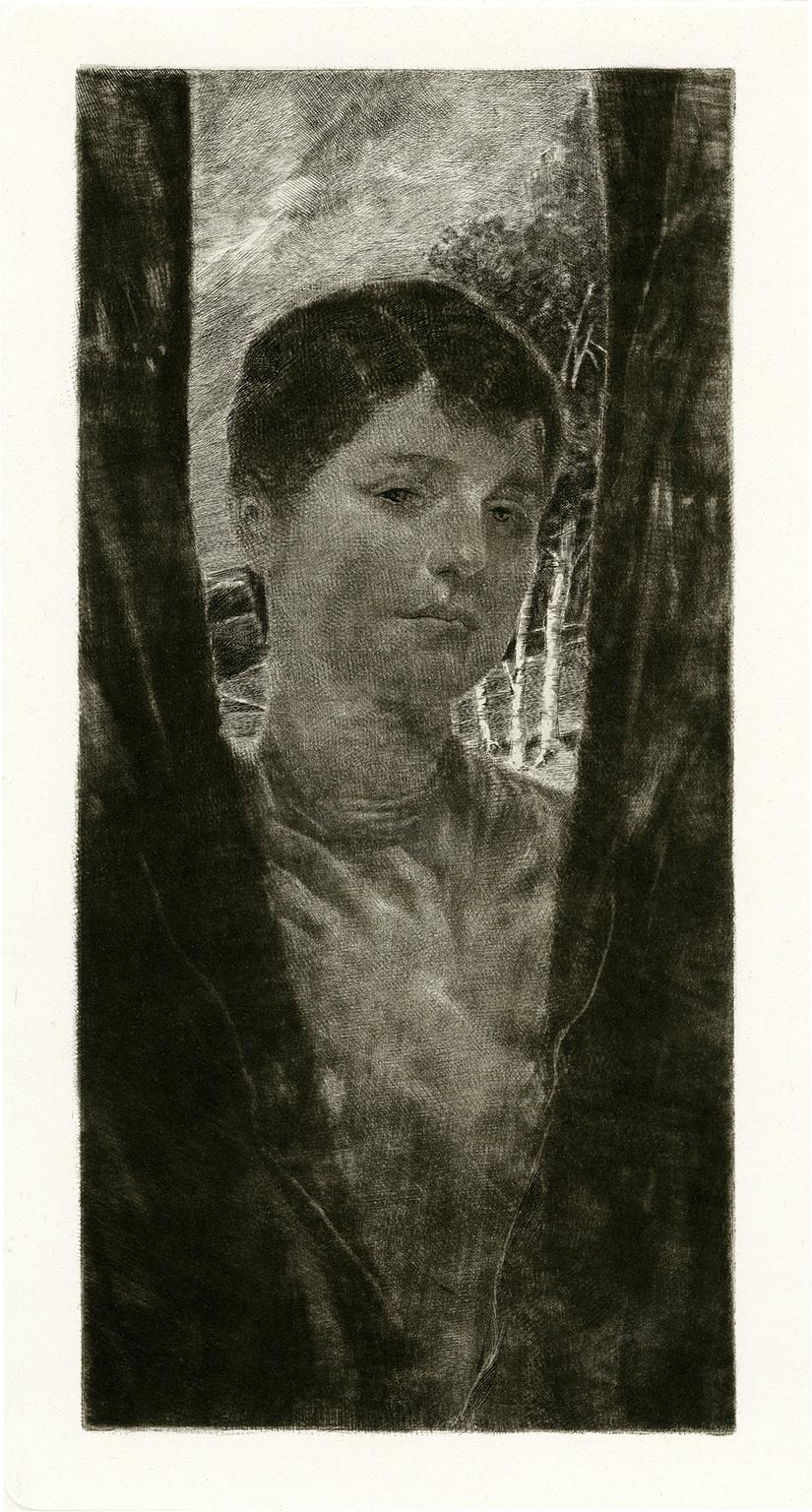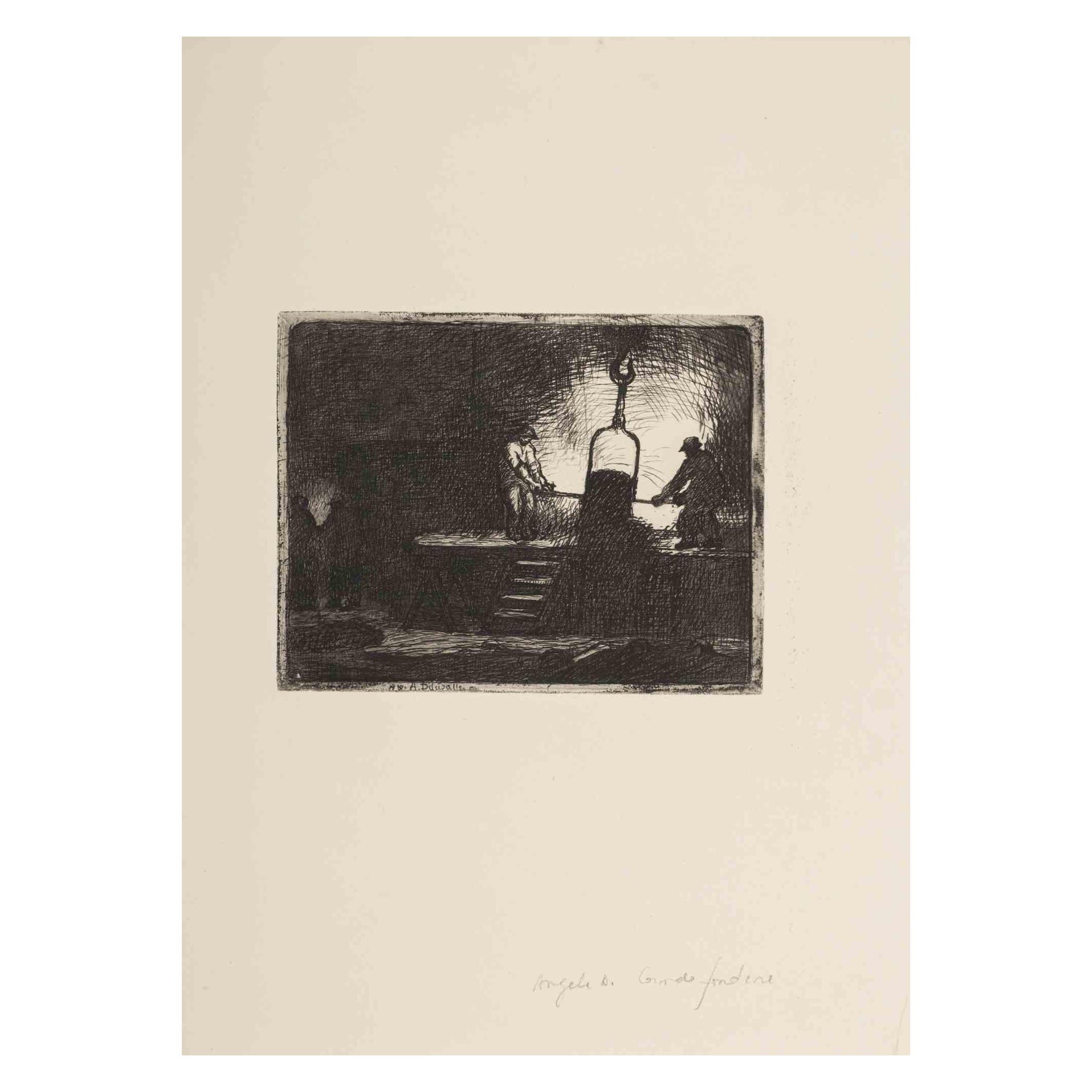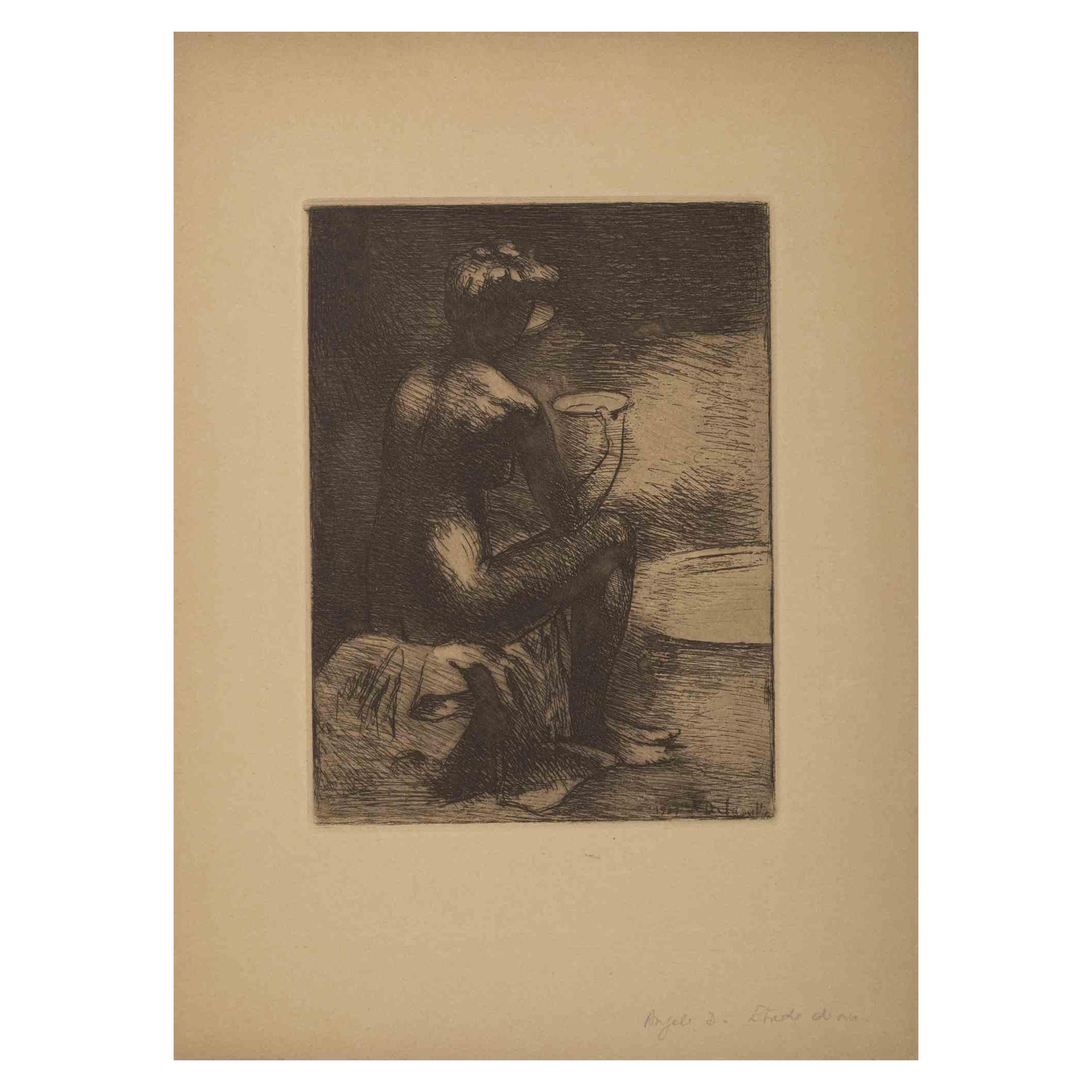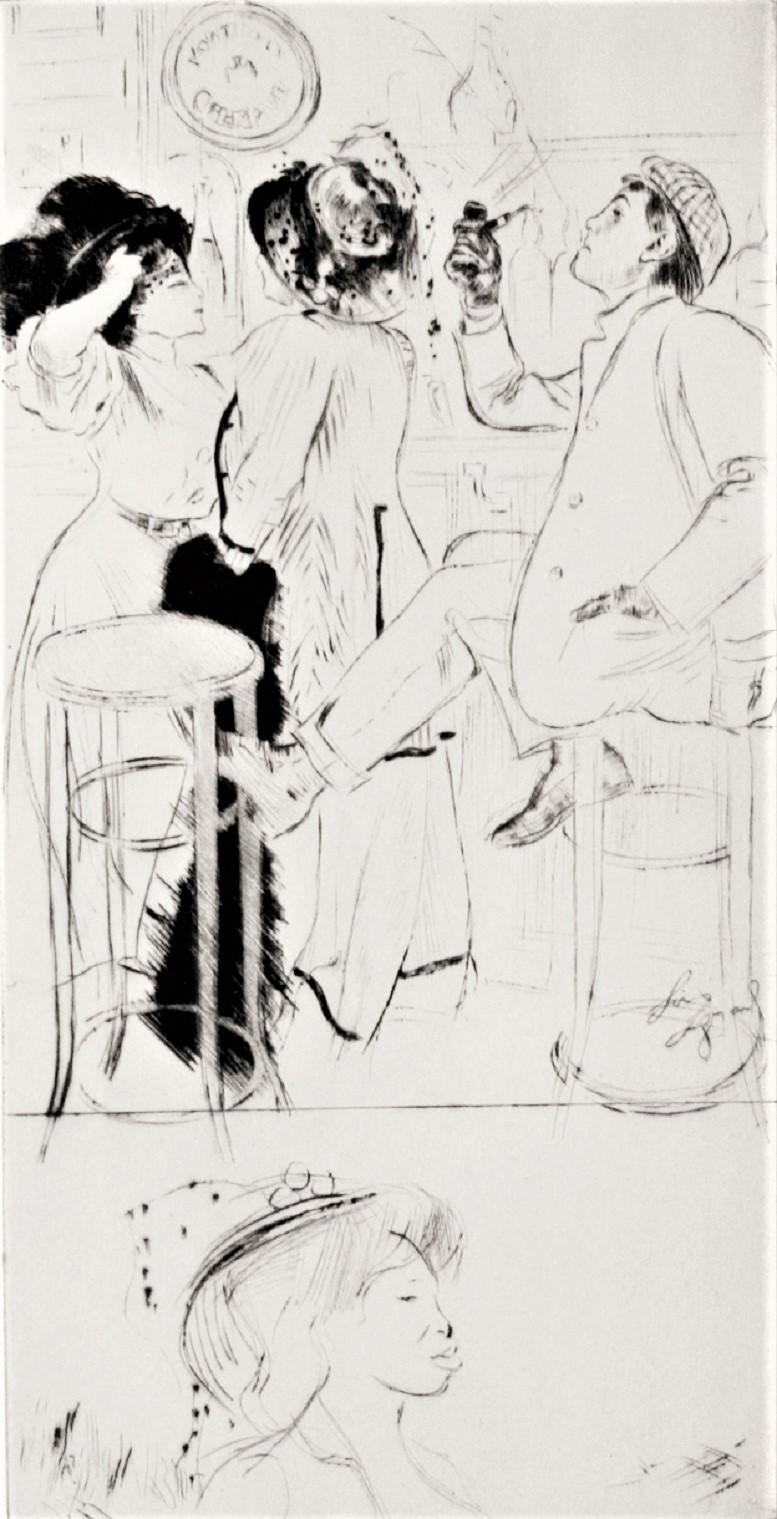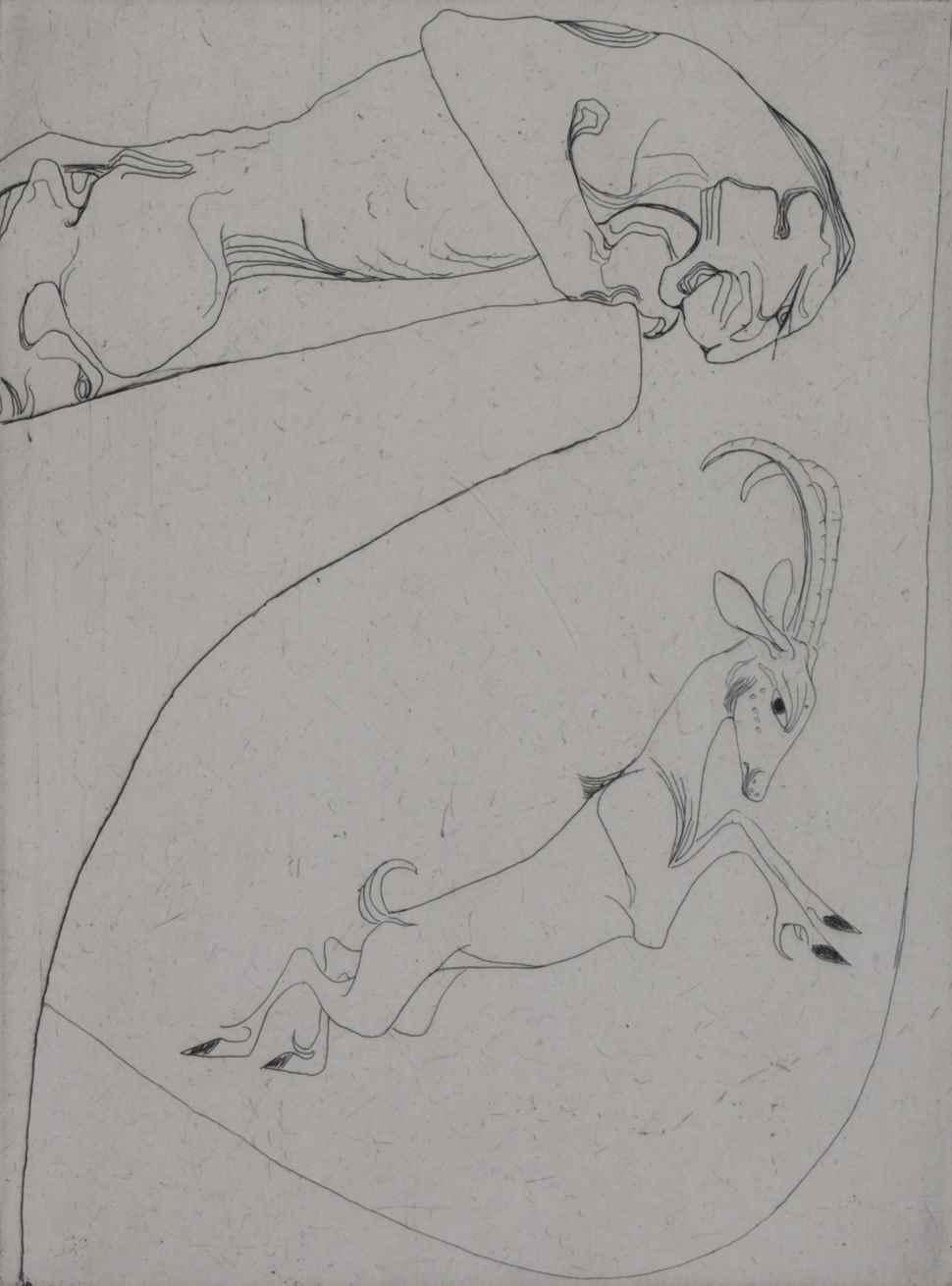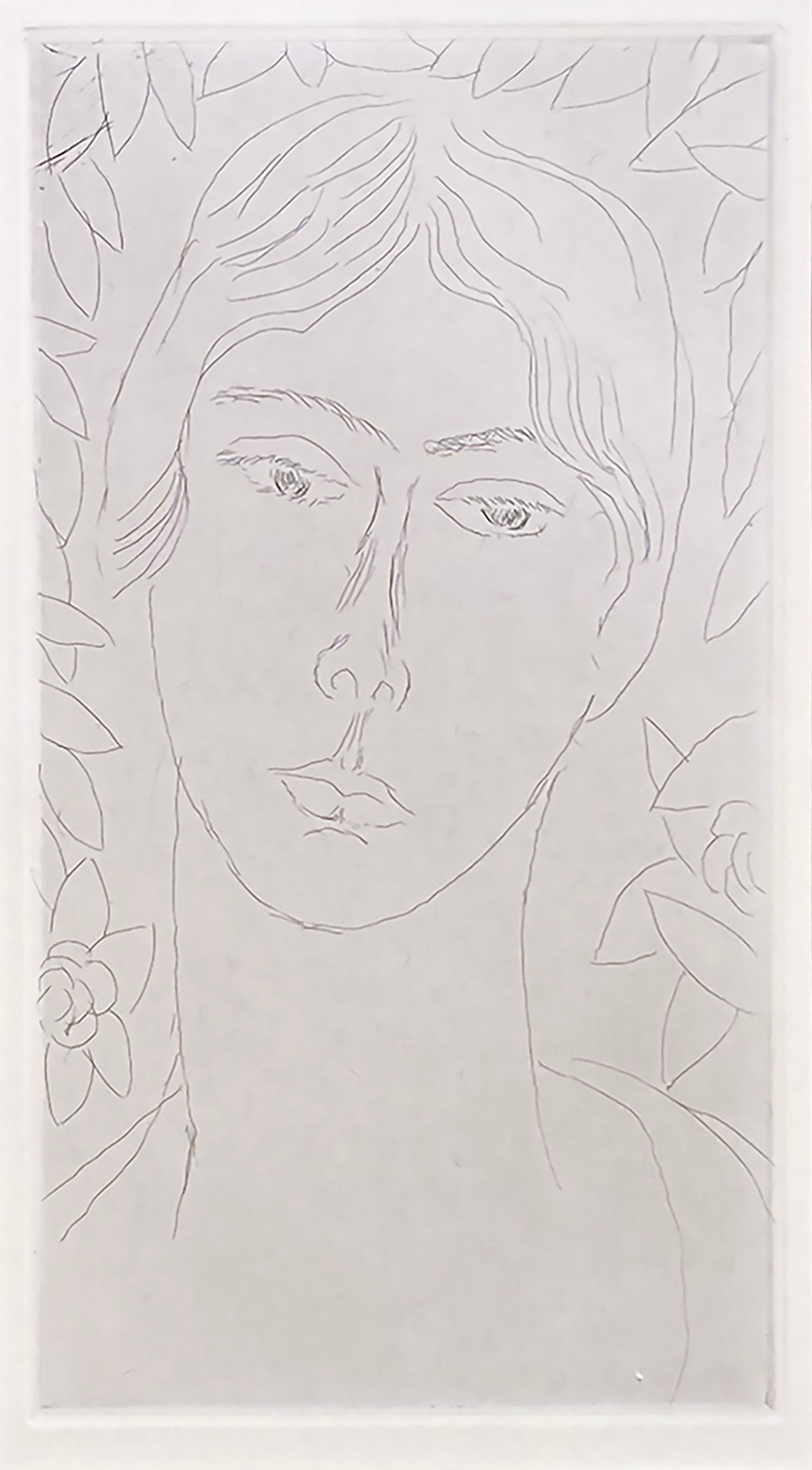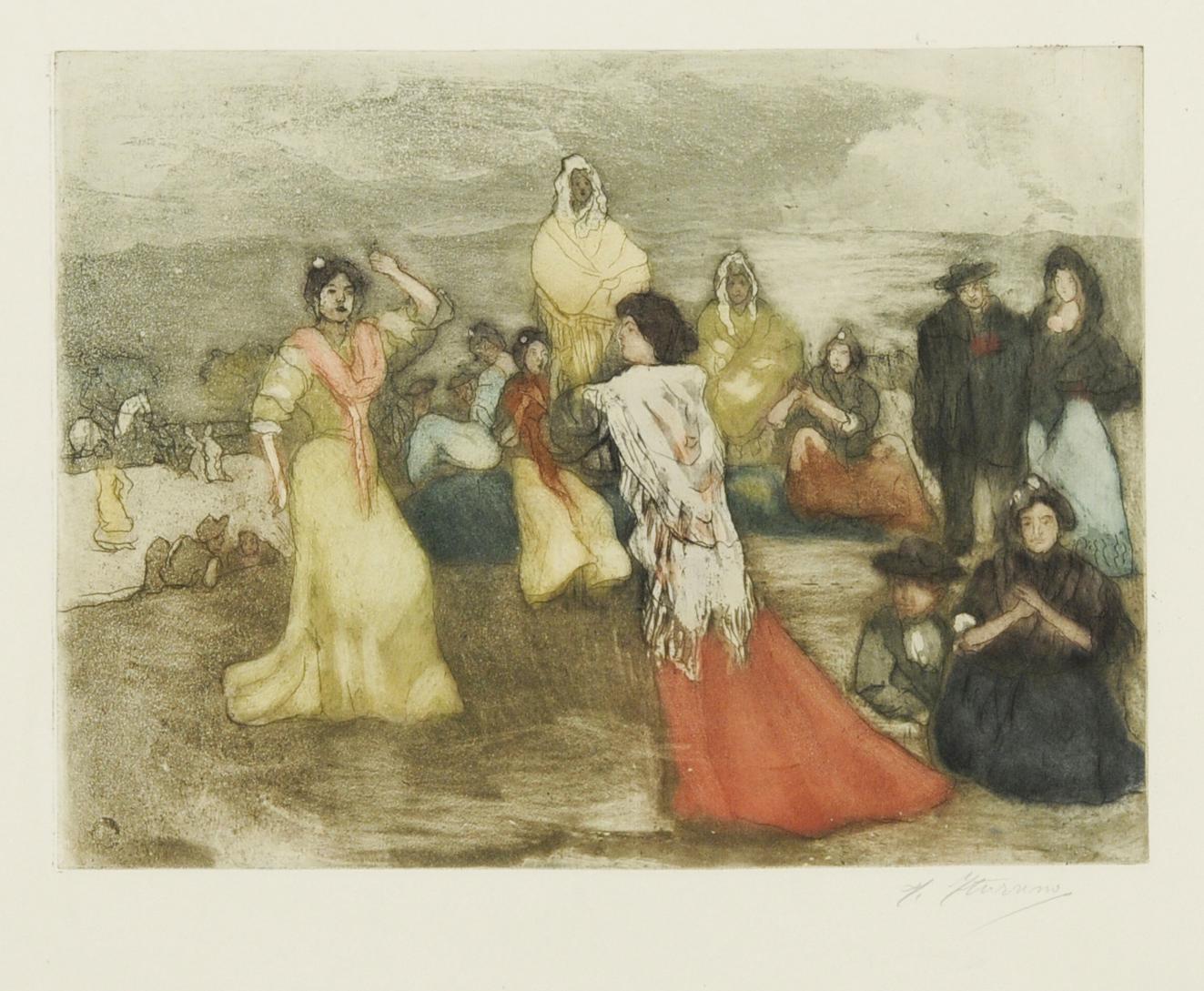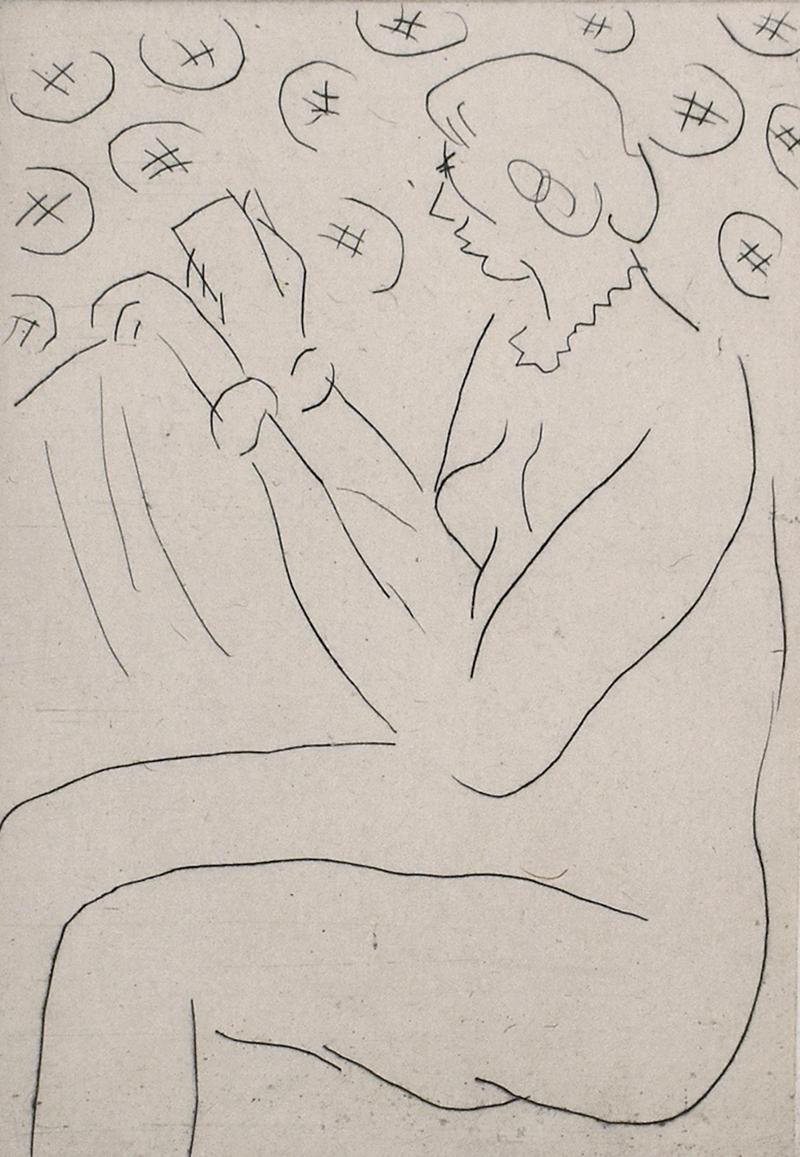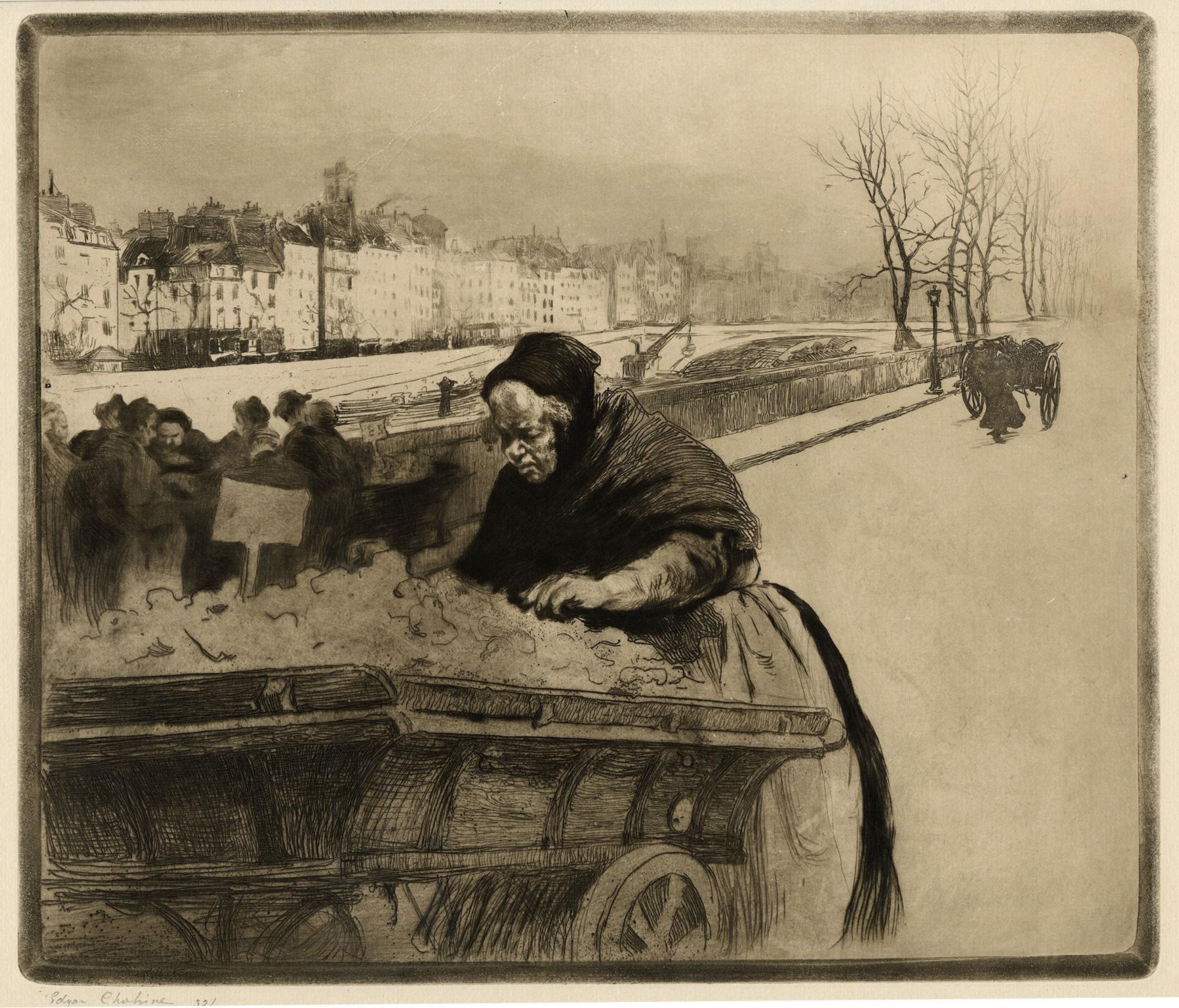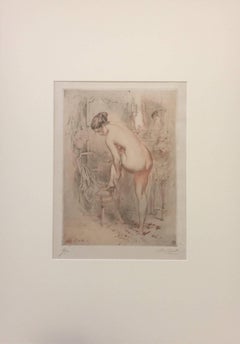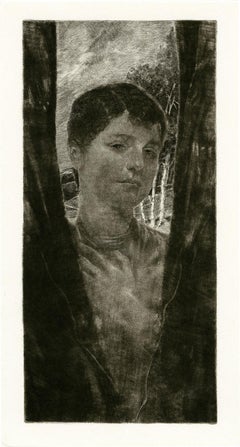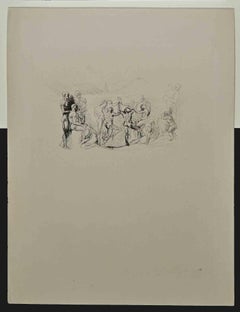
La Ronde - Original Etching by A. Rodin - 1905
View Similar Items
Want more images or videos?
Request additional images or videos from the seller
1 of 3
Auguste RodinLa Ronde - Original Etching by A. Rodin - 19051905
1905
About the Item
- Creator:Auguste Rodin (1840 - 1917, French)
- Creation Year:1905
- Dimensions:Height: 11.03 in (28 cm)Width: 8.47 in (21.5 cm)Depth: 0.04 in (1 mm)
- Medium:
- Movement & Style:
- Period:
- Framing:Framing Options Available
- Condition:
- Gallery Location:Roma, IT
- Reference Number:Seller: J-727731stDibs: LU65038918442
About the Seller
4.9
Platinum Seller
These expertly vetted sellers are 1stDibs' most experienced sellers and are rated highest by our customers.
1stDibs seller since 2017
Typical response time: 2 hours
More From This SellerView All
- La Moisonneuse Endormie - Original Etching by D. de Segonzac - 1929By André Dunoyer de SegonzacLocated in Roma, ITEdition of 60 pieces, printed on verge ancient, numbered and signed by the artist in pencil. Customs stamp on bottom left angle. Good margins. Ref. Cat. Lioré et Cailler 845.Category
1920s Post-Impressionist Figurative Prints
MaterialsEtching
- Village - Etching by M. de Vlaminck - 1950By Maurice de VlaminckLocated in Roma, ITVillage is a modern artwork realized by Maurice de Vlaminck in 1950. Black and white etching. Hand signed and dated on the lower margin. Edition of 100 specimen as reported on th...Category
1950s Post-Impressionist Landscape Prints
MaterialsEtching
- La ToiletteBy Armand BretonLocated in Roma, ITHand signed. Edition of 50 prints.Original Prints. Image Dimensions : 31 x 23 cm Passepartout included : 69 x 49 cm This artwork is shipped from Italy. Under existing legislation, a...Category
Early 1900s Post-Impressionist Figurative Prints
MaterialsEtching
$447 Sale Price24% Off - Tavern - Etching by Marcel Gromaire - 1952By Marcel GromaireLocated in Roma, ITTavern is a black and white etching on paper, realized in 1952 by Marcel Gromaire (1892-1971). Monogrammed on plate on the lower left corner. Good conditions except for some foxing...Category
1950s Post-Impressionist Figurative Prints
MaterialsEtching
$303 Sale Price20% Off - Des Ongles Et Du BecBy Georges RouaultLocated in Roma, ITEdition of 450 prints, belonging to the suite “Miserere”, considered as the most important religious graphic work of XX century. The single prints, realized with a sophisticated mixe...Category
1940s Post-Impressionist Figurative Prints
MaterialsEtching
- Seymour seatedBy James Abbott McNeill WhistlerLocated in Roma, ITNot signed. The American artist James Abbott McNeill Whistler can be considered a forerunner of the Post-Impressionist movement. Passepartout included : 53 x 37 cm Image Dimensions ...Category
Late 19th Century Post-Impressionist Figurative Prints
MaterialsEtching
You May Also Like
- The PrisonerBy (after) André DerainLocated in Mount Vernon, NYEtching, signed in the plate.Category
1660s Fauvist Figurative Prints
MaterialsEtching
$600 Sale Price50% Off - Erinnerung (Remembrance) — Turn-of-the Century Romantic EtchingBy Max KlingerLocated in Myrtle Beach, SCMax Klinger, 'Erinnerung (Remembrance)', etching and aquatint, 1896. A fine, richly inked impression, on off white, wove paper, with full margins (1 3/4 to 3 1/8 inches), in excellen...Category
1890s Post-Impressionist Figurative Prints
MaterialsAquatint, Etching
$440 Sale Price20% Off - SportsmenBy Louis LegrandLocated in Storrs, CTSportsmen. 1908. Etching and drypoint. Exsteens 271.i/ii. 11 1/4 x 5 3/4 (sheet 17 3/8 x 12 1/4). Series: Les Bars. From the first state edition of 30 proofs with the remarque sketch...Category
Early 1900s Post-Impressionist Figurative Prints
MaterialsDrypoint, Etching
$875 Sale Price50% Off - Curves by Orovida Pissarro, 1919 - Etching PrintBy Orovida PissarroLocated in London, GBCurves by Orovida Pissarro (1893 - 1968) Etching, trial proof no. 54 20.2 x 15 cm (8 x 5 ⅞ inches) Signed and dated lower right, Orovida 1919 Inscribed lower left Trial proof no. 54 ...Category
1910s Post-Impressionist Animal Prints
MaterialsPaper, Etching
$862 Sale Price20% Off - "Mlle Landsberg" (grade planche, pl. 16)By Henri MatisseLocated in Missouri, MO"Mlle Landsberg" (grade planche, pl. 16), 1914 Henri Matisse (French, 1869-1954) Signed and Numbered Lower Right Edition 12/15 Image size: 7 7/8 x 4 5/16 inches Sheet size: 17 11/16 x 12 1/2 inches With frame: 19 1/2 x 14 1/2 inches Henri Matisse came from a family who were of Flemish origin and lived near the Belgian border. At eight o'clock on the evening of December 31, 1869, he was born in his grandparents' home in the town of Le Cateau in the cheerless far north of France. His father was a self-made seed merchant who was a mixture of determination and tightly coiled tension. Henri had no clear idea of what he wanted to do with his life. He was a twenty-year-old law clerk convalescing from appendicitis when he first began to paint, using a box of colors given to him by his mother. Little more than a year later, in 1890, he had abandoned law and was studying art in Paris. The classes consisted of drawing from plaster casts and nude models and of copying paintings in the Louvre. He soon rebelled against the school's conservative atmosphere; he replaced the dark tones of his earliest works with brighter colors that reflected his awareness of Impressionism. Matisse was also a violinist; he took an odd pride in the notion that if his painting eye failed, he could support his family by fiddling on the streets of Paris. Henri found a girlfriend while studying art, and he fathered a daughter, Marguerite, by her in 1894. In 1898 he married another woman, Amelie Parayre. She adopted the beloved Marguerite; they eventually had two sons, Jean, a sculptor and Pierre who became an eminent art dealer. Relations between Matisse and his wife were often strained. He often dallied with other women, and they finally separated in 1939 over a model who had been hired as a companion for Mme. Matisse. She was Madame Lydia, and after Mme. Matisse left, she remained with Matisse until he died. Matisse spent the summer of 1905 working with Andre Derain in the small Mediterranean seaport of Collioure. They began using bright and dissonant colors. When they and their colleagues exhibited together, they caused a sensation. The critics and the public considered their paintings to be so crude and so roughly crafted that the group became known as Les Fauves (the wild beasts). By 1907, Matisse moved on from the concerns of Fauvism and turned his attention to studies of the human figure. He had begun to sculpt a few years earlier. In 1910, when he saw an exhibition of Islamic art, he was fascinated with the multiple patterned areas and adapted the decorative universe of the miniatures to his interiors. As a continuation of his interest in the "exotic", Matisse made extended trips to Morocco in 1912 and 1913. At the end of 1917, Matisse moved to Nice; he would spend part of each year there for the remainder of his life. A meticulous dandy, he wore a light tweed jacket amd a tie when he painted. He never used a palette, but instead squeezed his colors on to plain white kitchen dishes...Category
1910s Fauvist Figurative Prints
MaterialsEtching, Drypoint
Price Upon Request - Axel Wallert, Seated Woman With Mandolin, EtchingLocated in Cheltenham, GBThis exquisite early 20th-century etching by Swedish artist Axel Wallert (1890-1962) depicts a seated woman playing the mandolin. It’s brimming with style yet captured with sensitivi...Category
1910s Post-Impressionist Figurative Prints
MaterialsPaper, Etching

